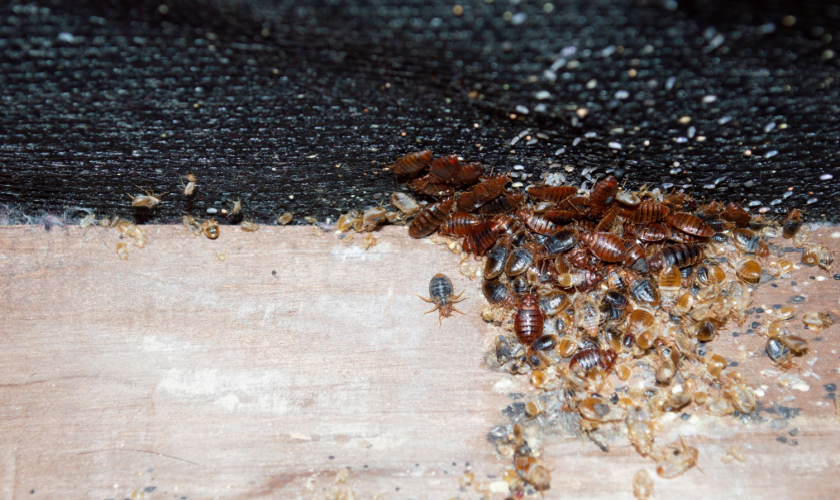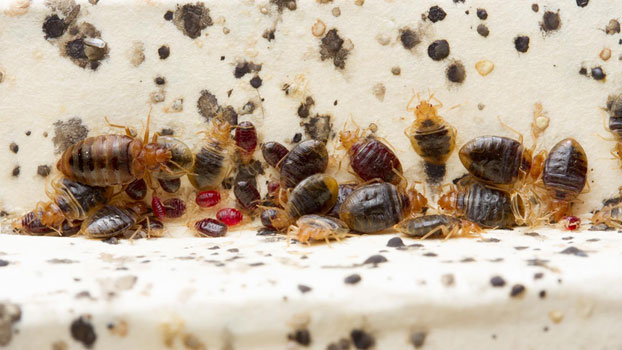Reliable A1 Bed Bug Treatment Houston - Remove Bed Vermin
Reliable A1 Bed Bug Treatment Houston - Remove Bed Vermin
Blog Article
Comprehending the Lifecycle of Parasites for Targeted Control Strategies
Understanding the lifecycle of parasites is a basic facet of reliable insect management methods. Through a much deeper understanding of exactly how insects prosper and evolve, customized control techniques can be made to deal with specific points in their lifecycle, ultimately leading to even more successful bug management results.
Importance of Comprehending Pest Lifecycle
Comprehending the lifecycle of pests is essential for establishing efficient and targeted control techniques in parasite management. By comprehending the numerous phases an insect undergoes from egg to adult, bug control professionals can determine prone points in the lifecycle where intervention can be most effective. Understanding when larvae are most active can assist figure out the optimal timing for applying larvicides. In addition, recognizing the lifespan of an insect types can assist in predicting population development patterns and possible problem risks.
Furthermore, acknowledging the particular ecological problems necessary for each phase of the parasite's lifecycle can lead choices on environment alteration or exemption techniques to lower and interfere with the lifecycle bug populations. This knowledge enables pest monitoring specialists to carry out positive actions instead of depending exclusively on reactive treatments, leading to even more sustainable and lasting pest control remedies. Eventually, a thorough understanding of parasite lifecycles equips insect control experts to customize their methods successfully, reducing ecological influences and making the most of control end results.
Secret Phases in Insect Growth
To effectively carry out targeted control strategies in insect monitoring, an essential facet depends on adequately recognizing and understanding the vital stages in insect advancement. Parasite development generally is composed of a number of vital phases that are critical for their lifecycle and management. The initial stage is the egg phase, where parasites lay eggs that later on hatch into larvae. Larvae then progress right into pupae, a phase where they undertake metamorphosis prior to becoming grown-up pests. Comprehending these stages is necessary as it helps in determining weak spots in the lifecycle where control actions can be most reliable.

Susceptabilities in Parasite Lifecycle
Throughout the different phases of a parasite's lifecycle, unique vulnerabilities arise that can be tactically targeted for effective control procedures (A1 Bed bug exterminator houston LLC). One essential susceptability lies in the egg phase, where bugs are Discover More Here typically more at risk to specific pesticides or organic control agents due to their soft outer covering, making them simpler targets for treatment. Comprehending these vulnerabilities in the parasite lifecycle is crucial for establishing accurate and efficient control techniques that successfully take care of insect populaces while decreasing environmental effect.
Applying Targeted Control Measures

Executing targeted control actions normally involves a multi-faceted technique. This may include environment modification to make the atmosphere much less hospitable to bugs, such as getting rid of standing water for mosquito control or sealing access Full Report factors for rodents. In addition, biological control approaches can be utilized, where natural killers or virus are introduced to keep bug populaces in check.
Chemical control, such as the cautious application of chemicals, is an additional common method. However, it is important to utilize these compounds sensibly to reduce environmental impact and possible injury to non-target varieties. Integrated Bug Administration (IPM) techniques that incorporate different control procedures in a worked with and sustainable way are frequently the most reliable in attaining long-lasting bug administration goals. By executing targeted control steps based on a complete understanding of insect lifecycles, pest populaces can be successfully managed while reducing risks to human wellness and the atmosphere.
Boosted Pest Management Practices

Moreover, the incorporation of organic control representatives, such as natural predators or virus of insects, can help in reducing dependence on chemical pesticides and promote a much more balanced environment. Carrying out physical obstacles and traps can likewise become part of improved insect administration practices, offering safe and targeted remedies for parasite control. In addition, making use of pheromones and other semiochemicals can disrupt pest breeding patterns and interaction, causing minimized bug populations gradually.
Final Thought
By identifying crucial phases in insect growth and vulnerabilities in their lifecycle, targeted control procedures can be executed to decrease pest populaces. Enhanced bug monitoring practices can aid minimize the dependence on broad-spectrum pesticides and promote even more sustainable and ecologically pop over to these guys pleasant bug control approaches.
Comprehending the lifecycle of parasites is essential for creating effective and targeted control methods in parasite management. By comprehending the numerous stages an insect goes via from egg to grownup, pest control experts can recognize susceptible factors in the lifecycle where intervention can be most successful. Inevitably, an extensive understanding of parasite lifecycles equips bug control practitioners to tailor their techniques properly, maximizing and reducing environmental impacts control results.
By carrying out targeted control procedures based on a detailed understanding of parasite lifecycles, pest populations can be effectively controlled while minimizing risks to human health and the environment.
By recognizing vital phases in bug advancement and vulnerabilities in their lifecycle, targeted control measures can be implemented to minimize pest populaces.
Report this page